Effective Strategies to Remove Chocolate Stains
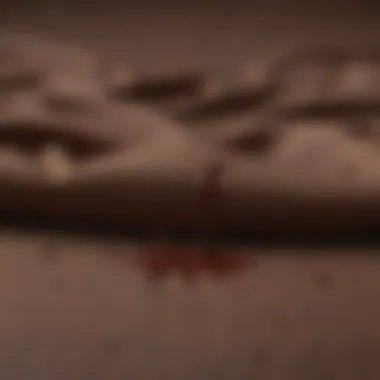

Intro
Chocolate stains can be challenging. They often leave behind noticeable marks that can be hard to remove. This article delves into the effective strategies for erasing chocolate stains, providing detailed insights into cleaning techniques tailored to different fabrics and surfaces. Understanding the basic composition of chocolate aids in knowing how to tackle these stains effectively.
Removing chocolate residue involves considering factors like temperature, material type, and timing. By applying the right methods, it is possible to restore the appearance of your clothes or upholstery. This guide covers everything from immediate actions to prevent permanent stains, to recommended treatments based on various material types. Readers will find practical advice that helps manage stains, tackles their concerns about damage, and promotes confidence in their ability to deal with unexpected accidents.
Understanding Chocolate Stains
Chocolate consists of cocoa solids, cocoa butter, sugar, and often dairy ingredients. This composition makes it greasy and sticky, leading to stubborn stains. When addressed quickly and correctly, the chances of successful removal increase significantly. The keys to effective stain removal include acting fast and using the right cleaning agents suited for each material.
Types of Stains
Chocolate stains can be broadly classified into two categories:
- Fresh Stains: These are more manageable. They usually lift more easily if treated promptly.
- Set-in Stains: These develop after chocolate has dried. They require more effort to remove and may not come out completely.
Recognizing the type of stain is crucial in deciding on a treatment approach.
"Immediate action generally yields better results when dealing with chocolate stains."
General Stain Removal Strategies
The first step in any cleaning process is to gently scrape away excess chocolate without pushing it deeper into the fabric. Following this, there are various methods to consider based on the fabric type. Here are some of the most effective strategies:
- Cold Water Rinse: Rinse fresh chocolate stains under cold, running water. This helps in flushing out a significant amount of chocolate.
- Stain Remover Application: Utilize a commercial stain remover formulated for the specific fabric type. Apply it according to the manufacturer’s instructions.
- Homemade Solutions: A mixture of liquid dish soap and cold water can work effectively on many materials. Always test in a small area first.
These methods should be chosen based on the material of the stained item for optimal results.
Specific Techniques Based on Fabric Type
Not all fabrics require the same cleaning method. Here are some recommendations:
For Cotton
- Rinse with cold water
- Apply a heavy-duty detergent directly to the stain
- Wash in cold water
For Wool and Silk
- Blot the stain with a cloth soaked in cold water
- Avoid excessive rubbing that can damage the fibers
- Use a mild detergent on the area
For Upholstery
- Blot with a sponge dampened with a mixture of water and mild detergent
- Rinse with clean water to remove soap residue
Using these tailored strategies ensures that fabric integrity is maintained while effectively removing chocolate stains.
Preventative Measures
To avoid encountering chocolate stains in the future, consider the following tips:
- Use placemats when serving chocolate desserts to catch spills.
- Teach children to manage messes promptly to help reduce stain incidents.
- Store chocolate in containers that minimize the risk of rupture or damage.
Implementing these measures can significantly decrease the frequency of chocolate stains in your environment.
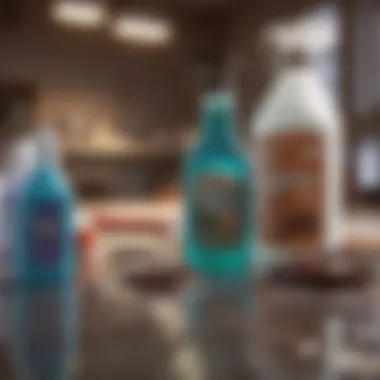

The End
Preface to Chocolate Stains
Chocolate stains can create significant distress for homeowners, party hosts, or anyone who enjoys chocolate but struggles with its messiness. The presence of chocolate on fabrics and surfaces is not just an aesthetic problem; it can lead to lasting damage if not addressed properly. Understanding the nature of chocolate stains and their potential impact is crucial for effective cleaning strategy development.
When chocolate comes into contact with various materials, its composition plays a key role in determining how best to tackle stains. Since chocolate contains cocoa solids, sugar, and often fats, the mix can create diverse challenges based on the surface affected. For instance, cotton may absorb stains differently than silk, necessitating varied approaches.
Moreover, recognizing common surfaces that fall victim to chocolate stains can aid in preemptive actions and cleaning methods. Whether one is dealing with clothing, furniture, or carpets, tailored strategies enhance the efficiency of stain removal efforts. Therefore, this section aims to lay the groundwork for understanding chocolate stains, helping readers devise practical and effective solutions.
Understanding the Composition of Chocolate
The composition of chocolate is complex and often varies based on the type. Broadly, chocolate consists of cocoa solids, cocoa butter, sugar, and sometimes milk solids. Each of these components contributes to the stain removal challenge.
- Cocoa Solids: These provide the rich color and flavor but can bind to fibers, making removal difficult.
- Cocoa Butter: This fat contributes to the maintenance of the stain, particularly on fabrics, as it can leave a greasy residue.
- Sugar: While sugar can dissolve in water, when solidified through temperature changes, it may create a sticky situation.
Understanding these elements is key to choosing appropriate cleaning methods. For example, heat can help break down fat, while cold water can be suitable for sugar-based stains. This knowledge empowers individuals to tailor their cleaning approaches for optimal effectiveness.
Common Surfaces Affected by Chocolate Stains
Chocolate stains can affect a variety of surfaces, each requiring unique cleaning techniques. Some of the most commonly stained surfaces include:
- Clothing: Fabrics such as cotton, wool, and synthetics are frequent targets, and the type of fabric often dictates the cleaning method utilized.
- Upholstery: Sofas and chairs, often made of various materials, can trap chocolate, requiring careful consideration to prevent further damage.
- Carpets: Carpet fibers present another challenge, often requiring specialized techniques to prevent spreading or setting the stain.
- Leather and Suede: These materials are especially sensitive, requiring gentle methods to avoid irreversible damage.
The risk of permanent staining is heightened without proper immediate action. Therefore, awareness of these surfaces helps prioritize efforts in tackling chocolate stains effectively.
Immediate Actions Upon Staining
When a chocolate stain occurs, acting quickly is vital. Immediate actions can determine whether the stain becomes a permanent reminder of an unfortunate incident or a temporary annoyance. Delay may set the stain, making it more difficult to remove later. This section clarifies the crucial initial responses that can effectively minimize the damage caused by chocolate stains.
Assessing the Severity of the Stain
Evaluating how serious the stain is will inform the appropriate cleaning strategy. Some chocolate stains may be fresh, while others have dried and permeated deeper into the material. Fresh chocolate is generally easier to treat, as the oils and sugars have not yet bonded with the fabric or surface. To assess the severity:
- Check how long the stain has been present. Fresh stains benefit from immediate attention, where older stains require different techniques or products.
- Consider the type of material affected. Some fabrics are more susceptible to staining than others. For instance, a cotton shirt may respond differently than silk.
- Examine the chocolate type. Dark chocolate, with its higher cocoa content, may stain more severely than milk chocolate. Knowing this can help in determining the correct cleaning approach.
Recognizing these factors allows for a more structured response to the situation, potentially saving the affected item from permanent damage.
Initial Cleaning Techniques
Removing Excess Chocolate
Before proceeding with any deep cleaning methods, remove any excess chocolate carefully. This step is essential because if the chocolate is pushed into the material, it may create a larger stain or make removal more challenging. Here are key points about this technique:
- Use a spoon or a dull knife to gently lift off solid chocolate. Scrape gently to avoid spreading the stain further.
- It’s vital to avoid rubbing, as this can embed the remaining chocolate deeper into the fibers.
This action serves a practical purpose – the quicker excess chocolate is removed, the less likely it is for the stain to set. This technique is beneficial since it lays the foundation for more effective cleaning steps.
Blotting Techniques
After removing excess chocolate, use a blotting technique to absorb any remaining moisture or oils. Blotting is an essential aspect of stain removal:
- Dampen a clean, white cloth or paper towel with cold water. Avoid using hot water, as it can set chocolate stains.
- Press the cloth onto the stain, absorbing fluid without rubbing. Start from the outside and work inwards to avoid spreading the stain.
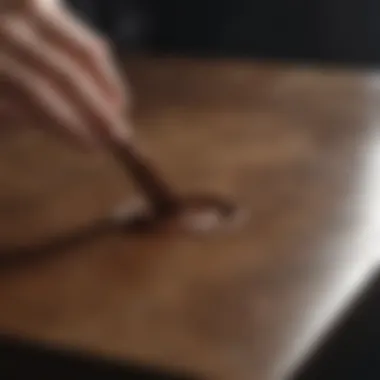
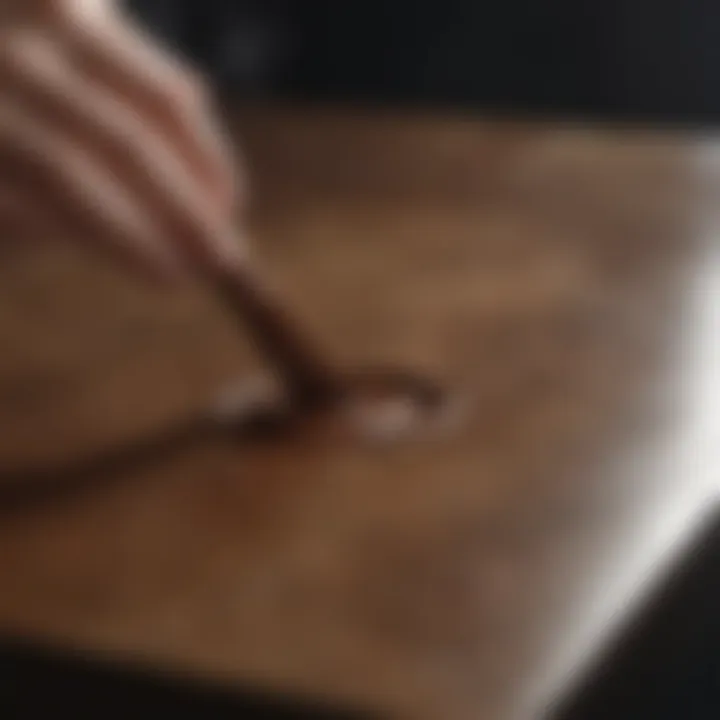
This technique's effectiveness lies in its ability to lift the stain from the fabric rather than smear it. Blotting techniques are popular because they are effective on a variety of materials and simple to apply, making them an accessible option for most homeowners.
"Immediate actions can significantly reduce the chances of a stain becoming permanent. Understanding material types and suitable techniques is key to effective cleaning."
In summary, recognizing the severity of a chocolate stain and conducting immediate cleanup through excess removal and proper blotting sets the stage for successful chocolate stain management. By mastering these initial actions, homeowners can protect their fabrics and surfaces from damage.
Materials and Products for Stain Removal
In the pursuit of effective chocolate stain removal, the selection of appropriate materials and products is paramount. This section examines the range of options available, emphasizing how each choice contributes to successful stain eradication. The effectiveness of any cleaning method hinges on the tools and cleaning solutions utilized. Understanding what materials are most suitable for various surfaces will lead to better outcomes and less potential damage.
Choosing the Right Cleaning Solution
Commercial Stain Removers
Commercial stain removers are tailored products specifically designed to tackle tough stains, including chocolate. They often contain powerful enzymes or chemicals that break down the stain's composition, leading to effective removal. One key characteristic of these products is their ease of use; most come in spray or gel forms that allow for targeted application.
The main advantage of using commercial cleaners is their efficacy. They are formulated based on scientific research and testing, thus many users find they yield immediate, visible results. However, it is essential to consider the potential for adverse reactions on delicate fabrics or surfaces. Always perform a patch test before applying the product more broadly.
Homemade Solutions
Homemade cleaning solutions present a natural and often cost-effective alternative to commercial products. Recipes often utilize readily available household items such as vinegar, baking soda, or dish soap. Their main appeal lies in their origin; many individuals prefer to avoid harsh chemicals, particularly on clothing or items used for serving food.
The benefit of homemade solutions is their versatility and safety. These mixtures can be customized based on the material being treated. However, the downside is that they may not be as effective against stubborn stains as commercial options. Results can vary significantly, depending on the mixture and the time allowed for it to work on the stain.
Tools Needed for Effective Cleaning
When aiming for effective stain removal, the right tools complement cleaning solutions and enhance overall efficiency. Selecting the appropriate tools not only aids the cleaning process but also minimizes the risk of fabric or surface damage.
Cloths and Sponges
Cloths and sponges are foundational tools in any cleaning arsenal. They can absorb liquids well, making them useful for blotting away excess chocolate before any further cleaning steps. Typically, microfiber cloths are favored, as they trap dirt and stains without scratching surfaces.
The unique feature of these tools is their ability to be reused multiple times. This not only reduces waste but also provides a cost-effective solution over time. However, it is vital to ensure that they are cleaned thoroughly between uses to avoid transferring stains back to clean surfaces.
Brushes and Scrapers
Brushes and scrapers serve as effective tools for more persistent stains or for surfaces that require a little extra scrubbing. Utilizing a brush can help lift ingrained chocolate from upholstery or carpets, while a scraper can gently clear away dried chocolate residue without damaging the underlying surface.
The benefit of brushes and scrapers is their targeted cleaning approach. They allow for detailed attention to areas that cloths may miss. Nonetheless, it is crucial to select the appropriate brush type; using a hard-bristled brush on delicate fabrics can cause more harm than good.
Stain Removal Techniques by Material Type
Understanding how to remove chocolate stains effectively varies greatly depending on the material involved. Each material responds uniquely to cleaning techniques and products, which can either aid or hinder the stain removal process. By recognizing the properties of different fabrics and surfaces, homeowners can save time and frustration when addressing chocolate stains. Effective cleaning involves tailored methods that take into account the material's texture, colorfastness, and essential care instructions.
Removing Chocolate Stains from Clothing
Cotton Fabrics
Cotton is widely used in clothing due to its softness and breathability. It is a durable fiber that can withstand various cleaning methods. One significant advantage of cotton is its ability to absorb moisture. When dealing with chocolate stains, this characteristic is particularly useful. Using water or stain removers can penetrate the fibers effectively, aiding in the stain's removal. Common strategies include cold water rinsing followed by applying a detergent directly on the stain. However, one must be cautious, as hot water can set the stain. This makes cotton a popular choice for stain removal, coupled with its ease of washing and ability to tolerate harsh treatments.
Wool and Silk
Wool and silk, while luxurious and often favored in fashion, present unique challenges for stain removal. Specifically, wool is known for its resilience but can shrink or become misshaped under high heat or inappropriate washing methods. Silk, on the other hand, is delicate and needs gentle handling. When removing chocolate stains from these fabrics, it is imperative to act swiftly. Using a blotting technique with a soft cloth can prevent the stain from setting. A mild detergent mixed with cool water can further help cleanse the item, but caution is required as aggressive scrubbing can damage the fabric. Both materials require more nuanced care, making them less straightforward compared to cotton, but with proper methods, effective cleaning is still achievable.
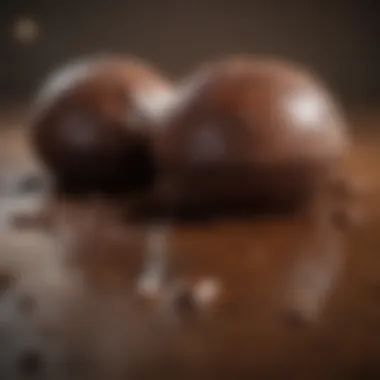
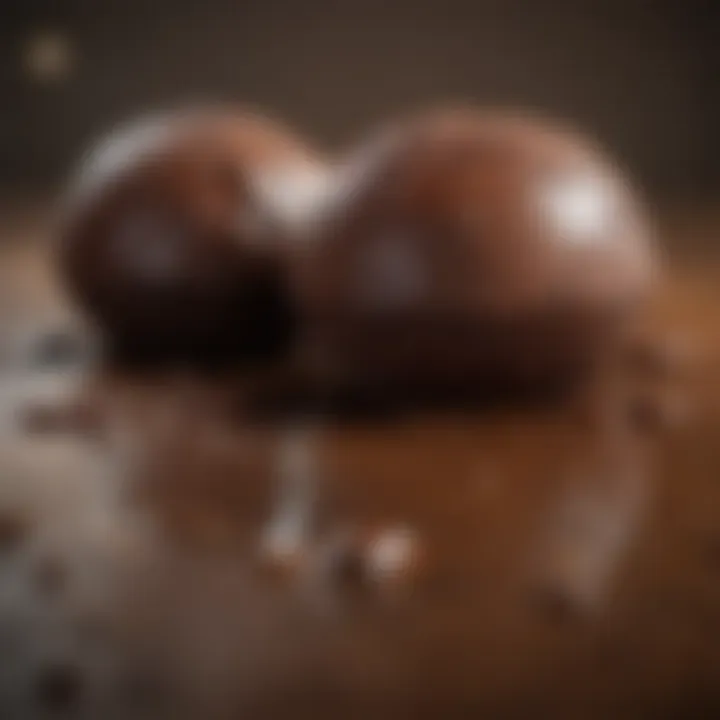
Cleaning Upholstery and Carpets
Fabric Upholstery
Fabric upholstery often ends up bearing the brunt of chocolate spills, especially during social gatherings. This kind of upholstery is made from various materials, giving it different cleaning properties. The texture plays a critical role in stain removal; for example, coarse fabrics may trap chocolate residues more deeply, making gentle brushing essential. Mild cleaning solutions, such as a mix of dish soap and water, can be applied with a clean cloth, ensuring to blot without excessive rubbing. Using a specialized fabric cleaner is also an option, but one must perform a patch test first to confirm colorfastness. Always be aware of the manufacturer's care instructions, as this can guide the best approach for treatment.
Carpet Fibers
Carpet fibers vary widely, affecting how they absorb stains. Natural fiber carpets, like wool, may hold stains differently than synthetic ones like nylon. Chocolate stains on carpets can be particularly stubborn, often requiring a systematic approach. First, it is crucial to scrape any excess chocolate carefully without pushing it further into the fibers. Following this, a stain remover specific to the carpet type should be applied. Always test cleaners on a hidden spot first to avoid discoloration. Moreover, using a wet vacuum can efficiently extract the stain and excess cleaning solution, ensuring thoroughness in the cleaning process.
Treating Leather and Suede
Leather and suede demand special attention when tackling chocolate stains. Both materials are porous yet can be sensitive to moisture and harsh chemicals. Generally, for leather, it is recommended to use a damp cloth to wipe away excess chocolate. Afterward, applying a leather conditioner can help maintain its natural oils, keeping the leather supple and preventing further staining. For suede, utilize a suede brush to gently lift the chocolate remnants. Care should be taken to avoid soaking the suede. If the stain persists, professional cleaning is often the best course of action to prevent permanent damage.
"Understanding the material type is crucial in the stain removal process. Ignoring this can lead to ineffective cleaning and potential fabric damage."
By tailoring techniques to specific materials, homeowners can enhance their stain removal efforts, achieving successful outcomes while preserving the integrity of their belongings.
Advanced Stain Removal Techniques
Chocolate stains can be not only unsightly but also challenging to remove. As one delves deeper into the nuances of advanced stain removal techniques, it becomes evident that understanding the specifics can have tremendous benefits. These techniques go beyond just surface cleaning, targeting the root causes of stubborn stains. Effective methods can save valuable fabrics and upholstery from permanent damage while restoring surfaces to their original state. With the right approaches, homeowners can tackle even the most stubborn chocolate stains with confidence.
Enzymatic Cleaning Approaches
Enzymatic cleaning methods represent a cutting-edge strategy in the fight against chocolate stains. These methods utilize enzymes—specific proteins that can break down various types of dirt and stains on a molecular level. Products containing enzymes can target the proteins, fats, and carbohydrates present in chocolate, allowing for a more thorough clean.
- Benefits of Enzymatic Cleaners:
- Targeted Action: Enzymatic cleaners can penetrate fabrics deeply, often working miracles on tough stains that other methods may not resolve effectively.
- Environmentally Friendly: Many enzymatic cleaners are biodegradable, making them a more suitable choice for eco-conscious homeowners.
- Versatility: They can be used on various materials, including carpets, upholstery, and even some clothing.
It is essential to follow the product instructions carefully. Typically, one would apply the cleaner, allowing it to sit for a specified time before blotting or rinsing. This ensures that the enzymes have ample opportunity to work on the stain.
Professional Cleaning Services
In cases where home remedies and enzymatic solutions fall short, enlisting professional cleaning services may be the solution. These experts have access to industrial-grade cleaning agents and equipment that are not available to the average consumer.
- Considerations for Professional Services:
- Experience: Professionals often have years of training in stain removal techniques and can effectively assess the fabric or surface type before proceeding.
- Insurance for Damages: In the rare event that damage occurs during the cleaning process, professional services often carry insurance to cover mishaps.
- Time Efficiency: Hiring a professional can save significant time, especially for large areas or delicate fabrics that require careful cleaning.
"Choosing professional cleaners can provide peace of mind and outstanding results, particularly for valuable or sentimental items."
To summarize, advanced stain removal techniques, particularly enzymatic cleaning and professional services, can offer high levels of efficacy for tackling chocolate stains. By incorporating these methods, homeowners can maintain the integrity of their fabrics and surfaces without sacrificing time or effectiveness.
Preventing Chocolate Stains in the Future
Preventing chocolate stains is an essential aspect of maintaining the integrity of fabrics and surfaces within the household. A proactive approach can save time, effort, and money. By implementing strategies to minimize the risk of stains, homeowners can enjoy their chocolate treats without concern. Understanding the nuances of chocolate composition and possible staining methods aids in formulating effective prevention techniques.
Best Practices for Serving Chocolate
When serving chocolate, consider adopting specific practices to reduce the likelihood of spills and accidental stains. Here are some effective tips:
- Use protective coverings: Tablecloths and placemats can act as barriers to common surfaces that may absorb chocolate easily. Select materials that are stain-resistant and easy to clean.
- Opt for portion control: Instead of placing large containers of chocolate, serve smaller portions in individual bowls. This decreases the chance of spills.
- Designate a separate area: Create a chocolate serving station. This keeps chocolate products together, reducing the spread of potential mess.
Implementing these best practices can lead to a more enjoyable experience when indulging in chocolate. A little foresight goes a long way in preventing unwanted stains.
Protective Treatments for Materials
Applying protective treatments to fabrics and surfaces plays a crucial role in stain prevention. These treatments form a barrier against potential stains, especially from chocolate. Consider the following options:
- Stain repellent sprays: Designed for various fabrics such as upholstery and clothing, these sprays create a protective layer. Selecting high-quality sprays can significantly enhance durability.
- Waterproof finishing: For surfaces like carpets, waterproof coatings help prevent liquid absorption. This can be particularly useful in homes with children or pets.
- Regular maintenance: Frequent cleaning and maintenance can keep fabrics and surfaces looking new. It is easier to treat minor spills before they set into potential stains.



